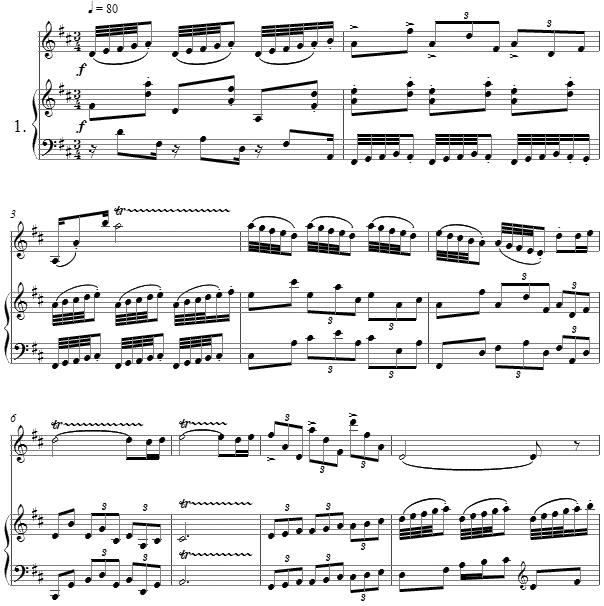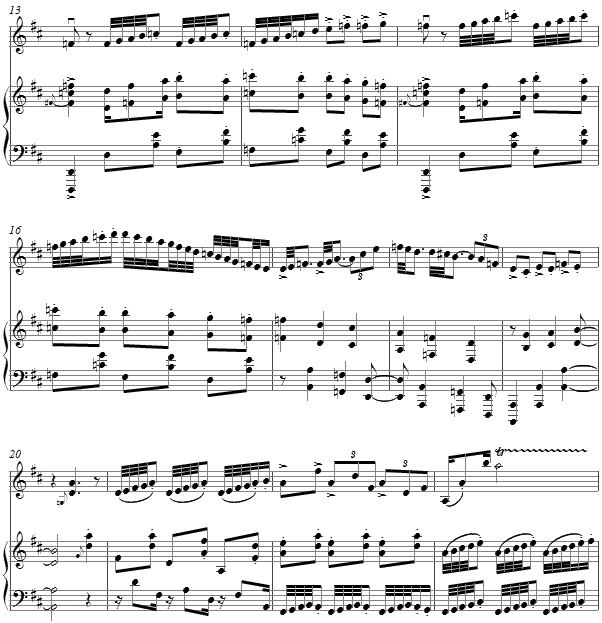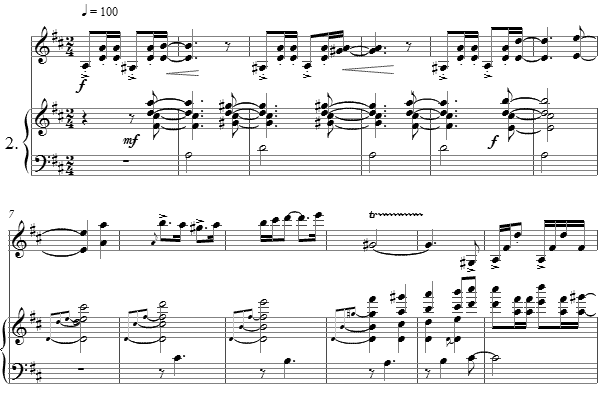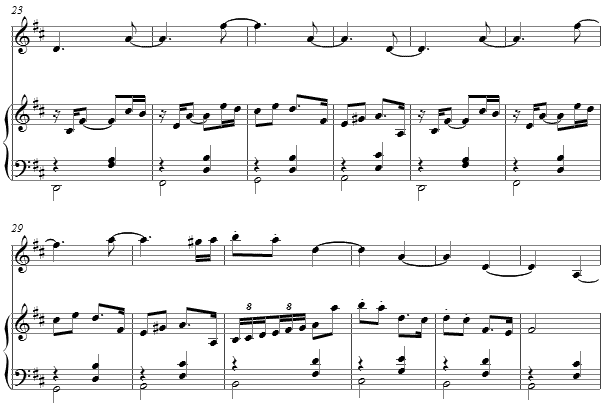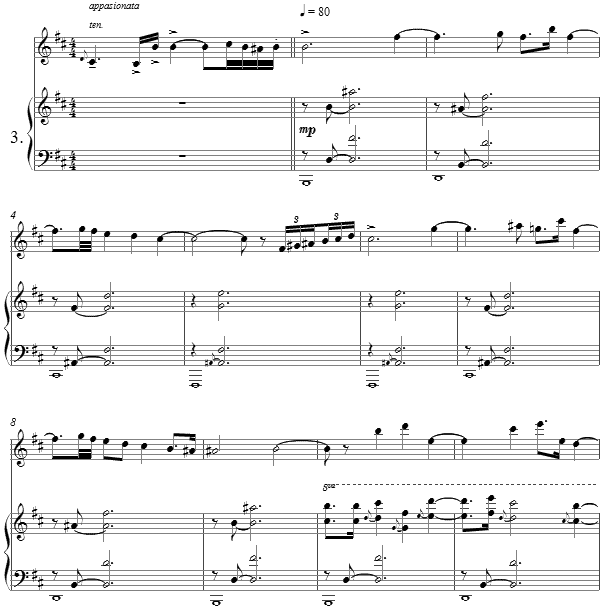Music and Texts of GARY BACHLUND
Vocal Music | Piano | Organ | Chamber Music | Orchestral | Articles and Commentary | Poems and Stories | Miscellany | FAQs
Sonatina for Violin and Piano - (2008)
for Peronnik Topp
i.
- [ 3 pages, circa 1' 30" ]
While performing Parsifal in concert with the fine Sinfonieorchester Aachen under the baton of Marcus Bosch, I had breakfast in the hotel each morning and struck up a conversation with a guest violinist playing in the concert, Swiss-born Peronnik Topp. Our conversations over several mornings covered chamber music, issues of new music and its future, as well as anecdotes about a number of musical experiences. From various "resonances" out of these conversation emerged a four movement Sonatina for Peronnik.
The first movement is a series of scales and triadic passages, structured with parallelism and some simple trading of gestures between the players.
Small influences from rag rhythms and the occasional major-minor dominant seventh, setting the Sonatina squarely across several centuries of musical tradition.
ii.
[ 4 pages, circa 1' 55" ]
The second movement opens with some double stops for the violin, as a prelude to a simple melody in the violin with a counterpoint melody in the piano over a minimal harmonic progression.
Peronnik has joked about composing something simple, including lots of half notes, such that the melody line for the violin sits on rhythmically displaced half note values for a large part of its voicing. Later in this set of melodic variations, the violin and piano exchange voices.
iii.
While composing this Sonatina, I was working in parallel on a small cycle of "curses" drawn from Yiddish folk sayings, titles Kloles. For that, I chose a very small passacaglia form with parallel sevenths in the piano accompaniment's upper voices later in the work, over which the violin would sing in minor scales emphasizing augmented seconds as the musical reference to East European Jewish music.
iv.
The last movement is a joyous, up-tempo romp in 12/8 meter with simple parallel triadism and scales across several mensural relationships, making up a rather complex giocoso for both players. While a slower tempo for the main body of the movement is noted, whatever quicker allegro the players might wish to choose should be bound by clarity and good humor.
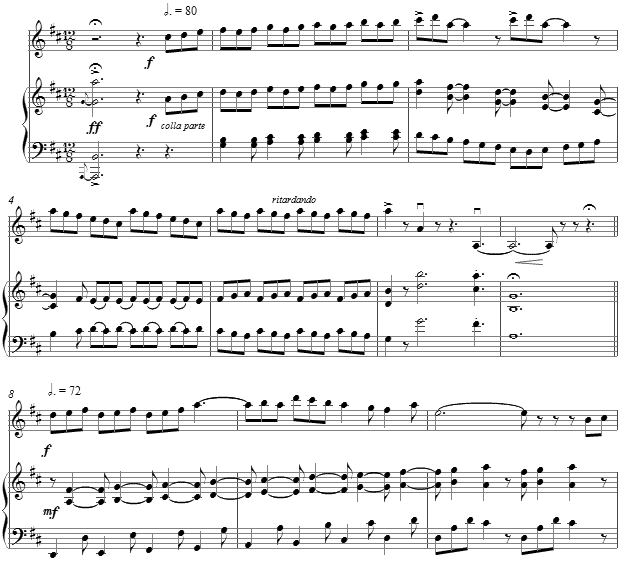
[ Total duration - 16 pages, circa 7' 35" ]
Peronnik Topp
Peronnik Topp was born in 1981 in Basel, Switzerland, began violin studies aged 7. Topp has studied at the Zurich School of Music, the Academy of Music and Theater in Rostock, Germany, and the Vienna University of Music. In 2008 he recieved his concert diploma. He has toured throughout Africa, China, Europe, Japan and USA and in 2005 he was leader of the World Youth Orchestra. Topp has played with the Berliner Symphoniker, Zürcher Kammerorchester, Brandenburgisches Staatsorchester, Staatstheater Cottbus, Staatsorchester Wiesbaden, Sinfonieorchester Aachen, Theater Hagen, Orquesta sinfonica de Tenerife, as well as with the BBC Philharmonic and the Hallé Orchestra Manchester. Since August 2007 he has been with the Beethoven Orchestra, Bonn.
The score for the Sonatina for Violin and Piano is available as a free PDF download, though any major commercial performance or recording of the work is prohibited without prior arrangement with the composer. Click on the graphic below for this piano-oboe score and separate oboe part, fifteen pages in total.
